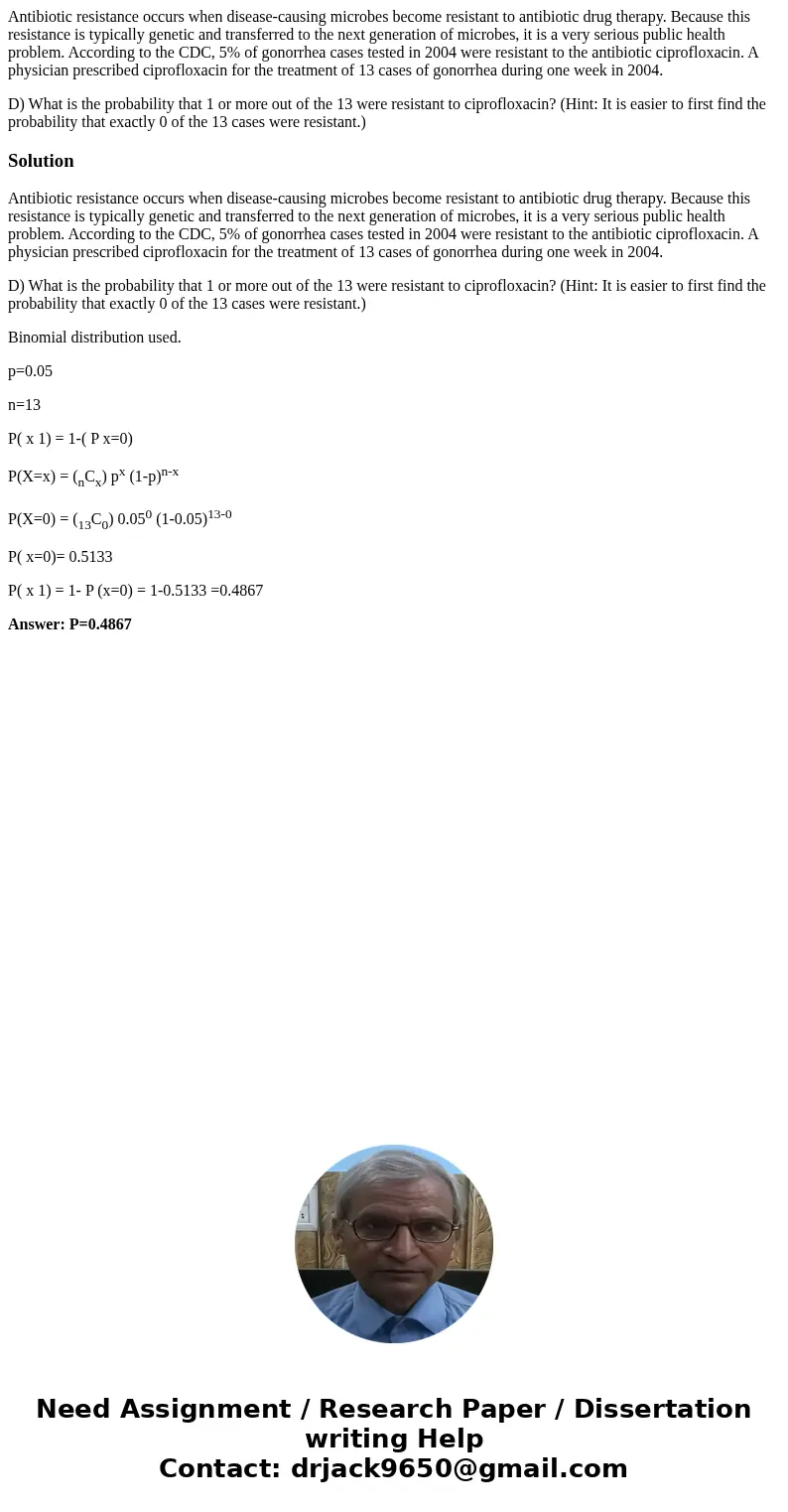Antibiotic resistance occurs when diseasecausing microbes be
Antibiotic resistance occurs when disease-causing microbes become resistant to antibiotic drug therapy. Because this resistance is typically genetic and transferred to the next generation of microbes, it is a very serious public health problem. According to the CDC, 5% of gonorrhea cases tested in 2004 were resistant to the antibiotic ciprofloxacin. A physician prescribed ciprofloxacin for the treatment of 13 cases of gonorrhea during one week in 2004.
D) What is the probability that 1 or more out of the 13 were resistant to ciprofloxacin? (Hint: It is easier to first find the probability that exactly 0 of the 13 cases were resistant.)
Solution
Antibiotic resistance occurs when disease-causing microbes become resistant to antibiotic drug therapy. Because this resistance is typically genetic and transferred to the next generation of microbes, it is a very serious public health problem. According to the CDC, 5% of gonorrhea cases tested in 2004 were resistant to the antibiotic ciprofloxacin. A physician prescribed ciprofloxacin for the treatment of 13 cases of gonorrhea during one week in 2004.
D) What is the probability that 1 or more out of the 13 were resistant to ciprofloxacin? (Hint: It is easier to first find the probability that exactly 0 of the 13 cases were resistant.)
Binomial distribution used.
p=0.05
n=13
P( x 1) = 1-( P x=0)
P(X=x) = (nCx) px (1-p)n-x
P(X=0) = (13C0) 0.050 (1-0.05)13-0
P( x=0)= 0.5133
P( x 1) = 1- P (x=0) = 1-0.5133 =0.4867
Answer: P=0.4867

 Homework Sourse
Homework Sourse